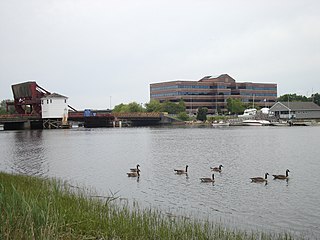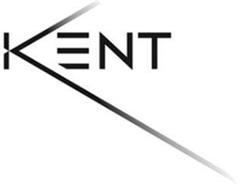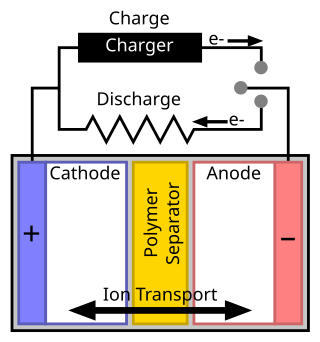
Rolling paper is a specialty paper used for making cigarettes. Rolling papers are packs of several cigarette-size sheets, often folded inside a cardboard wrapper. They are also known as 'blanks', which are used to encase tobacco or cannabis. It may be flavoured.

The Neponset River is a river in eastern Massachusetts in the United States. Its headwaters are at the Neponset Reservoir in Foxborough, near Gillette Stadium. From there, the Neponset meanders generally northeast for about 29 miles (47 km) to its mouth at Dorchester Bay between Quincy and the Dorchester section of Boston, near the painted gas tank.

Industrial wastewater treatment describes the processes used for treating wastewater that is produced by industries as an undesirable by-product. After treatment, the treated industrial wastewater may be reused or released to a sanitary sewer or to a surface water in the environment. Some industrial facilities generate wastewater that can be treated in sewage treatment plants. Most industrial processes, such as petroleum refineries, chemical and petrochemical plants have their own specialized facilities to treat their wastewaters so that the pollutant concentrations in the treated wastewater comply with the regulations regarding disposal of wastewaters into sewers or into rivers, lakes or oceans. This applies to industries that generate wastewater with high concentrations of organic matter, toxic pollutants or nutrients such as ammonia. Some industries install a pre-treatment system to remove some pollutants, and then discharge the partially treated wastewater to the municipal sewer system.

Kent is an American brand of cigarettes, currently owned and manufactured by R.J. Reynolds Tobacco Company in the United States and British American Tobacco elsewhere. The brand is named after Herbert Kent, a former executive at Lorillard Tobacco Company.

A dust collector is a system used to enhance the quality of air released from industrial and commercial processes by collecting dust and other impurities from air or gas. Designed to handle high-volume dust loads, a dust collector system consists of a blower, dust filter, a filter-cleaning system, and a dust receptacle or dust removal system. It is distinguished from air purifiers, which use disposable filters to remove dust.

Nonwoven fabric is a fabric-like material made from staple fibre (short) and long fibres, bonded together by chemical, mechanical, heat or solvent treatment. The term is used in the textile manufacturing industry to denote fabrics, such as felt, which are neither woven nor knitted. Some non-woven materials lack sufficient strength unless densified or reinforced by a backing. In recent years, non-wovens have become an alternative to polyurethane foam.

A cigarette filter, also known as a filter tip, is a component of a cigarette, along with cigarette paper, capsules and adhesives. Filters were introduced in the early 1950s.
Olefin fiber is a synthetic fiber made from a polyolefin, such as polypropylene or polyethylene. It is used in wallpaper, carpeting, ropes, and vehicle interiors.
Gurley Precision Instruments, or GPI, is an ISO-9001 certified U.S. manufacturing company based in Troy, New York.
Ahlstrom-Munksjö Oyj is a manufacturer of fiber-based products. Renewable fibers represent about 95% of Ahlstrom's total fiber use.

Bunzl plc is a British multinational distribution and outsourcing company headquartered in London, England.

Asbestos is a naturally occurring fibrous silicate mineral. There are six types, all of which are composed of long and thin fibrous crystals, each fibre being composed of many microscopic "fibrils" that can be released into the atmosphere by abrasion and other processes. Inhalation of asbestos fibres can lead to various dangerous lung conditions, including mesothelioma, asbestosis, and lung cancer. As a result of these health effects, asbestos is considered a serious health and safety hazard.
Air-laid paper is a textile-like material categorized as a nonwoven fabric made from fluff pulp.

George Hollingsworth (1813–1882) was an American artist, teacher, and administrator active in Massachusetts.

A separator is a permeable membrane placed between a battery's anode and cathode. The main function of a separator is to keep the two electrodes apart to prevent electrical short circuits while also allowing the transport of ionic charge carriers that are needed to close the circuit during the passage of current in an electrochemical cell.

Setralit is a technical natural fiber based on plant fibers whose property profile has been modified selectively in order to meet different industrial requirements. It was first manufactured in 1989 by Jean-Léon Spehner, an Alsatian engineer, and further developed by the German company ECCO Gleittechnik GmbH. The name “Setralit“ is derived from the French company Setral S.à.r.l. which is a subsidiary company of ECCO, where Spehner was employed at that time. Setralit was officially described first in 1990.

The American Enka Company was an American company that was the nation's largest rayon fiber manufacturer. Founded in 1928, its research division developed such things as Tyrex, improved rayon and nylon, and by-products for detergent makers and paper mills. It helped bolster the economies of Western North Carolina, West Virginia, Eastern Kentucky, Eastern Tennessee, Northern Georgia and Northern Alabama during the Great Depression and thereafter; its founding in 1928 by Dutch capital led the way for German, Swiss, and British investments in the American South, and it was one of the companies on the original Fortune 500 list.

Melt blowing is a conventional fabrication method of micro- and nanofibers where a polymer melt is extruded through small nozzles surrounded by high speed blowing gas. The randomly deposited fibers form a nonwoven sheet product applicable for filtration, sorbents, apparels and drug delivery systems. The substantial benefits of melt blowing are simplicity, high specific productivity and solvent-free operation. Choosing an appropriate combination of polymers with optimized rheological and surface properties, scientists have been able to produce melt-blown fibers with an average diameter as small as 36 nm.
FIDYST is a proprietary simulation tool developed by the Fraunhofer Institute for Industrial Mathematics that simulates fibers in turbulent flows. The name FIDYST is an acronym and means Fiber Dynamics Simulation Tool.
Hemp paper is paper varieties consisting exclusively or to a large extent from pulp obtained from fibers of industrial hemp. The products are mainly specialty papers such as cigarette paper, banknotes and technical filter papers. Compared to wood pulp, hemp pulp offers a four to five times longer fibre, a significantly lower lignin fraction as well as a higher tear resistance and tensile strength. Because the paper industry's processes have been optimized for wood as the feedstock, production costs currently are much higher than for paper from wood.














